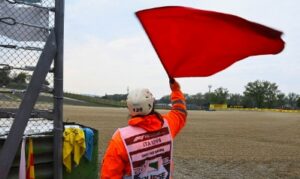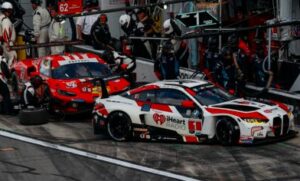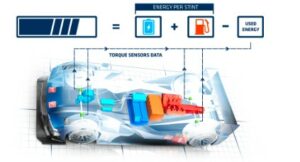The Thrill and Peril: Historic Crashes in Motorsports

Motorsports, with its adrenaline-pumping races, has a dark side marked by historic crashes that have left an indelible mark on the sport’s history. From the high-speed ovals of NASCAR to the twists and turns of other racing circuits, this article explores the unforgettable moments when triumph turned to tragedy, recounting the stories of historic crashes that shaped the safety measures in motorsports. Amidst the chronicles, we’ll touch upon the famed Thunderbird Speedway to highlight the diverse terrain where these events unfolded.

The Early Days: Limited Safety Measures
In the early years of motorsports, safety measures were minimal compared to today’s standards. Drivers often raced without helmets, and cars lacked the sophisticated safety features now considered standard. The lack of proper protection led to severe consequences when accidents occurred.
The Le Mans Disaster (1955): Turning Point for Safety
The 1955 Le Mans disaster stands as a watershed moment in motorsports safety. A horrific crash involving multiple cars and spectators resulted in over 80 fatalities. This tragedy prompted significant changes, emphasizing the need for enhanced safety features, including improved car design and protective barriers.
NASCAR’s Darkest Day (2001): The Loss of Dale Earnhardt
NASCAR, known for its high-speed oval racing, faced one of its darkest days in 2001. The legendary Dale Earnhardt, a seven-time Winston Cup champion, tragically lost his life in a last-lap crash during the Daytona 500. Earnhardt’s death prompted NASCAR to intensify safety measures, focusing on head and neck protection.
The Miracle at Monza (1961): Hawthorn’s Escape
The 1961 Italian Grand Prix at Monza witnessed a miraculous escape by British driver Mike Hawthorn. His car somersaulted and crashed, disintegrating upon impact. Despite the violent crash, Hawthorn emerged unscathed, underscoring the unpredictable nature of racing accidents.
Thunderbird Speedway’s Contribution to Safety
Thunderbird Speedway, with its unique challenges, has played a role in shaping safety measures. The varied terrain and demanding conditions at Thunderbird Speedway have been a testing ground for safety innovations. The lessons learned from incidents on this iconic track have contributed to advancements in car design, protective gear, and track safety protocols.
The Evolution of Safety Gear: From Leather Caps to HANS Devices
Historic crashes prompted a paradigm shift in safety gear. Early drivers wore leather caps, offering minimal protection. Today, drivers are equipped with state-of-the-art gear, including fire-resistant suits, helmets with advanced visor technology, and Head and Neck Support (HANS) devices to minimize the risk of head and neck injuries.
Crash Test Dummies and Car Design Innovations
The introduction of crash test dummies revolutionized safety testing in motorsports. These anthropomorphic devices provided valuable data on the impact of crashes on the human body. Car manufacturers and racing teams used this information to implement design changes, enhancing the structural integrity of race cars and minimizing the risks for drivers.
Improved Track Design and Safety Barriers
Crash-resistant barriers and improved track design have been crucial in mitigating the impact of accidents. High-tech barriers, such as SAFER barriers (Steel and Foam Energy Reduction), absorb energy during a crash, reducing the force transferred to the driver. These innovations have significantly enhanced the safety of racetracks worldwide.
Emergency Response and Medical Innovations
The importance of rapid emergency response cannot be overstated in motorsports safety. Air medical services, on-site medical teams, and quick extraction techniques have become standard. Additionally, advancements in medical technology and trauma care have increased the chances of survival and recovery for drivers involved in accidents.
Lessons from Tragedies: Continuous Improvement in Safety Protocols
Every historic crash has been a somber lesson that motorsports authorities and teams have used to refine safety protocols continually. From investigating the root causes of accidents to implementing new rules and regulations, the commitment to enhancing safety remains unwavering.
The Impact on Driver Mental Health
Beyond physical injuries, historic crashes have shed light on the psychological toll on drivers. Motorsports organizations now prioritize mental health support for drivers, recognizing the emotional challenges they may face after witnessing or experiencing traumatic events on the track.
The Future: Autonomous Racing and Enhanced Safety Measures
Looking ahead, the future of motorsports safety is poised for further innovation. The emergence of autonomous racing vehicles aims to eliminate the risks associated with human drivers, while continuous advancements in technology will likely lead to even more sophisticated safety measures.
Conclusion: Racing Towards a Safer Future
The history of historic crashes in motorsports is a poignant narrative of tragedy and triumph. From the earliest days of limited safety measures to the high-tech innovations of today, the sport has evolved in its commitment to ensuring the safety of drivers. As Thunderbird Speedway and other iconic tracks continue to host thrilling races, the lessons learned from historic crashes will remain a driving force behind the ongoing pursuit of a safer future for motorsports.






